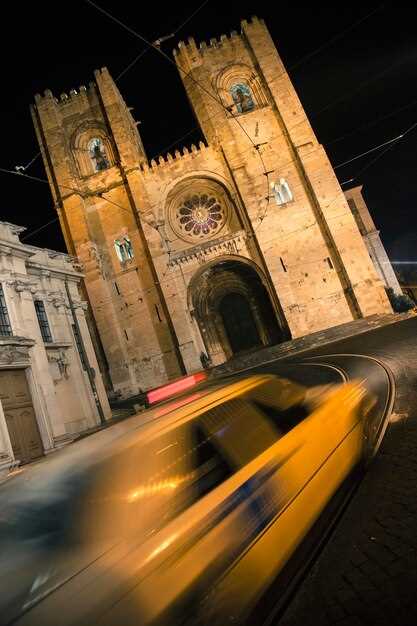Fiat’s Role in Italian Automotive Culture

Fiat, a name synonymous with Italian automotive innovation and craftsmanship, has been a pivotal force in shaping the automotive landscape of Italy since its inception in 1899. The company’s legacy is deeply intertwined with the essence of Italian design, melding functionality with aesthetics in a way that has inspired generations of car manufacturers both domestically and internationally. From compact city cars to luxurious sports models, Fiat has carved its niche in the market, proving that efficiency can coexist with elegance.
The formidable influence of Fiat extends beyond mere vehicle production; it resonates through the cultural fabric of Italy itself. As a brand, Fiat embodies the spirit of Italian ingenuity and resilience, making it a symbol of national pride. The company’s ability to adapt to changing consumer demands and technological advancements has solidified its reputation as a leader in the automotive industry, and its impact is felt not only in Italy but around the globe.
Moreover, Fiat’s commitment to sustainability and innovation reflects a broader trend within the automotive sector, championing greener technologies while honoring the traditional values that have defined the Italian automotive legacy. As we explore the intricate relationship between Fiat and Italy’s automotive tradition, it becomes clear that this iconic manufacturer continues to play a crucial role in shaping the future of mobility, all while staying true to its roots.
Exploring the Origins of Fiat and Its Foundational Role in Italian Car Manufacturing

Fiat, founded in 1899 in Turin, Italy, quickly emerged as a pioneering force in the automotive industry. The company, whose name stands for “Fabbrica Italiana Automobili Torino,” laid the groundwork for Italian automobile manufacturing by emphasizing innovative engineering and design. From its inception, Fiat’s commitment to quality and performance set new standards in the market, aligning well with Italy’s growing industrial landscape.
The early 20th century saw Fiat expand rapidly, producing a wide range of vehicles that catered to both personal and commercial needs. The introduction of the Fiat 501 in 1908, one of the first mass-produced cars, marked a significant milestone in accessible transportation for the Italian populace. This model, along with others, showcased Fiat’s ability to combine style with functionality, influencing the automotive design ethos in Italy.
Fiat’s legacy is deeply rooted in its contribution to Italy’s economy and culture. The brand not only provided jobs and stimulated industrial growth but also became a symbol of national pride. As the company evolved, it embraced technological advancements, making strides in engineering that resonated globally. By leading the way in innovation, Fiat helped establish Italy as a significant player in the global automotive arena.
In the post-World War II era, Fiat further solidified its reputation by introducing compact cars that appealed to a broader audience, helping reshape urban mobility in Italy. The Fiat 500, launched in 1957, became an iconic representation of Italian automotive design, embodying the spirit of a nation recovering and reinventing itself. Its compactness and affordability mirrored the lifestyle changes occurring in Italian society during the economic boom.
Over the decades, Fiat has continued to influence the automotive sector through strategic partnerships, constant innovation, and a commitment to sustainability. The company has played a crucial role in the preservation of Italy’s rich automotive heritage while also adapting to modern challenges. Today, Fiat stands as a testament to the enduring legacy of Italian car manufacturing, blending tradition with contemporary demands in the automotive market.
The Evolution of Iconic Italian Models: How Fiat Shaped Automotive Design

Fiat, one of the most storied brands in automotive history, has played a pivotal role in shaping the direction of Italian automotive design. From its inception in 1899, Fiat’s commitment to innovation and style has led to the creation of several iconic models that not only define the brand but also represent the broader Italian automotive legacy.
In the early 20th century, Fiat introduced the Fiat 501, a model that epitomized practicality and elegance, setting the stage for future designs. This vehicle not only marked a technological advance but also established styling cues that would resonate across generations of Italian cars.
Moving into the post-war era, Fiat launched the Fiat 500 in 1957, a revolutionary city car that quickly became a symbol of Italian culture and design. Compact, efficient, and charmingly styled, the 500’s design philosophy highlighted Fiat’s unique ability to create vehicles that were both functional and visually appealing, solidifying its legacy in the automotive world.
Throughout the decades, Fiat has continued to influence automotive design with models like the Fiat 124, which was renowned for its engineering and style. It not only won the European Car of the Year award but also paved the way for future designs that emphasized performance and aesthetics, demonstrating Fiat’s knack for blending technology with Italian flair.
Fiat’s impact extends beyond just individual models. The brand has significantly influenced design trends across the Italian automotive industry. Its collaborations with renowned designers, such as Giorgetto Giugiaro and Franco Sbarro, have led to the creation of vehicles that push the boundaries of conventional design, fostering a culture of creativity within Italy.
In recent years, models like the Fiat 500 Electric highlight how Fiat continues to evolve while maintaining its core values of style and efficiency. This transition to electric vehicles not only honors the brand’s legacy but also showcases its commitment to sustainability, ensuring that Fiat remains a key player in the future of automotive design.
In summary, Fiat’s influence on Italian automotive design is profound and enduring. Through its iconic models, innovative approaches, and collaborations with talented designers, Fiat has shaped not only its own legacy but has also left an indelible mark on the entire automotive landscape in Italy.
Assessing Fiat’s Legacy: The Brand’s Impact on Modern Italian Car Culture
Fiat, as a cornerstone of Italian automotive history, has left an indelible legacy that shapes modern car culture in Italy. From its inception in 1899, Fiat has consistently influenced automotive design, engineering, and manufacturing in the country. Its innovative spirit has fostered a unique blend of style, performance, and accessibility that resonates with Italian consumers and enthusiasts alike.
The brand’s impact can be seen in the popularization of compact and affordable vehicles, which cater to the densely populated urban environments of Italy. Models such as the Fiat 500 and Panda embody this philosophy, offering practical solutions without sacrificing Italian flair. These vehicles have become cultural icons, reflecting the lifestyle and aesthetic preferences of generations of Italians.
Fiat’s commitment to craftsmanship and design has also inspired a strong sense of national pride. The brand’s collaborations with renowned designers and its participation in motorsport showcase Italy’s engineering excellence and artistic expression. This fusion of form and function continues to inspire new generations of automotive designers and engineers in the country.
Moreover, Fiat has played a significant role in promoting sustainability in the automotive sector. By investing in hybrid and electric technologies, the brand is shaping the future of Italian car culture, aligning it with global trends towards greener mobility. This shift not only addresses environmental concerns but also reinforces Fiat’s position as a forward-thinking leader in the industry.
In summary, Fiat’s legacy is profoundly woven into the fabric of modern Italian car culture. Its influence extends beyond mere vehicle production; it embodies the spirit of innovation, design, and sustainability that defines Italy’s automotive landscape. As Fiat continues to evolve, its ability to adapt while remaining true to its roots ensures that it will maintain its significance in the hearts and minds of Italians for years to come.



